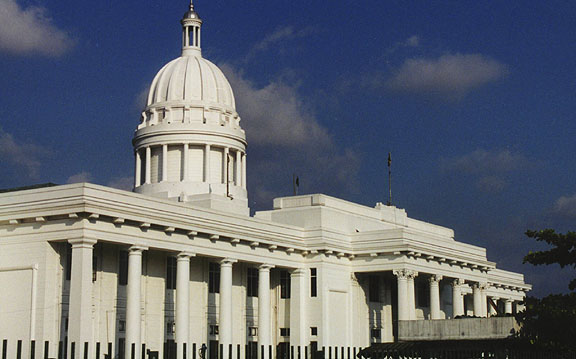

Colombo

Government house
Colombo, city in western Sri Lanka and a major port near the mouth of the Kelani River. The commercial capital of Sri Lanka, Colombo is the largest city in the country and owes its importance largely to its great breakwaters, which give shelter to a large, artificially created harbor. Beira Lake, administratively part of the port of Colombo, is connected with the harbor by a canal and locks.
British style business architecture
Colombo handles most of the foreign trade of Sri Lanka and is an important fueling station. Manufactures of the city include metal goods, textiles, clothing, and chemicals. Sri Jayawardenepura (Kotte), the administrative capital of Sri Lanka, is on the outskirts of Colombo.
varied transportation
(bus, mini-bus, van, and cow cart)The business section of Colombo, called the Fort, occupies the sites of the former fortified area. Broad avenues and modern buildings contrast with the narrow, crooked streets and ramshackle structures of the Pettah quarter. Among the hospitals is the Pasteur Institution. Places of worship include Christian churches, Muslim mosques, and Buddhist temples.
Jami-Ul-Alfar Mosque (1909)
The University of Colombo (founded in 1967), Sri Lanka Technical College (1893), and other institutions of learning are located in the city. The early name of the city, Kalan-totta (Kelani ferry), derived from a nearby river ferry point, was corrupted into Kolambu by the Arabs and changed to Colombo in 1517 by the Portuguese in honor of Christopher Columbus. The city was taken by the Dutch in 1656 and by the British in 1796. Population (1990 estimate) 615,000.
railroad station
At a Market
Along the Coast
fishing boats
boats on shore
fisherman shacks
between highway and railroad along the coast
catholic school
beach scene
![]()
Other Countries in the Indian Ocean
![]()